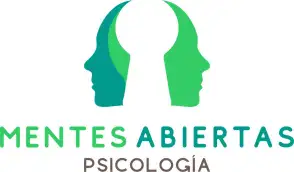The relationship between trauma and eating disorders (EDs) has garnered increasing attention in psychological research due to the high rates of comorbidity between these conditions. While the prevalence of post-traumatic stress disorder (PTSD) symptoms in the general population ranges from 3% to 8%, among individuals with EDs, it rises to between 9% and 24%. This link underscores the importance of understanding how traumatic experiences influence the development, maintenance, and severity of EDs.
Key symptoms in EDs include inappropriate compensatory behaviors (ICBs), defined as strategies to compensate for episodes of binge eating or to maintain rigid control over body weight. These include purging, severe dietary restriction, and excessive exercise. However, the connections between ICBs and trauma-related symptoms are complex and often specific to each type of behavior. This article delves deeper into this relationship, focusing on the impact of factors such as neuroticism and emotional regulation.
Trauma and Eating Disorders: What Does the Science Say?
Psychological trauma can stem from events such as physical, emotional, or sexual abuse, severe accidents, natural disasters, or significant loss. In the context of EDs, exposure to trauma is a well-documented risk factor, particularly concerning compensatory behaviors. Below, we explore the main scientific evidence linking different types of ICBs with trauma.
1. Purging: A Maladaptive Coping Mechanism
Among compensatory behaviors, purging (self-induced vomiting, use of laxatives, diuretics, or enemas) has been extensively studied. Longitudinal and cross-sectional studies have shown that individuals who have experienced sexual trauma are up to 90% more likely to engage in purging. This behavior appears to function as an emotional regulation strategy to temporarily alleviate the distress associated with trauma.
For example, research by Vidana et al. (2020) found that individuals who experienced trauma both in childhood and adulthood displayed higher levels of purging behaviors compared to those who experienced trauma in only one life stage or none at all. This suggests that the accumulation or repetition of traumatic experiences may increase the likelihood of developing extreme compensatory behaviors.
2. Dietary Restriction: The Link to Trauma and Body Image
Dietary restriction, while less studied, has also shown significant associations with trauma. Recent findings indicate that PTSD symptoms increase the likelihood of skipping meals by 17% as a weight-control strategy. These findings suggest that restriction is not solely driven by body image concerns but may also represent an attempt to manage emotional or psychological distress stemming from trauma.
Nelson et al. (2022) found that, in a network of symptoms related to EDs and PTSD, dietary restriction was most closely associated with trauma-related symptoms such as intrusive thoughts and hyperarousal, reinforcing the idea that trauma underlies many of these behaviors.
3. Excessive Exercise: Benefits and Risks
Excessive exercise represents a third type of ICB, whose relationship with trauma is more ambiguous. While moderate and regular exercise is associated with reductions in PTSD symptoms such as avoidance and hyperarousal, compulsive or pathological exercise does not seem as strongly linked to trauma. This raises important questions about the factors distinguishing healthy exercise from harmful patterns in this context. Some researchers suggest that excessive exercise may function similarly to purging, serving as a dysfunctional coping mechanism to alleviate emotional stress.
Neuroticism as a Moderator: A Hypothesis in Question
Neuroticism, a personality trait characterized by emotional sensitivity and a tendency to experience negative emotions such as anxiety and sadness, has been proposed as a potential moderator in the relationship between trauma and EDs. However, recent studies suggest that while neuroticism is related to specific behaviors such as excessive exercise, it does not significantly moderate the connection between trauma and other ICBs like purging or restriction.
In this context, neuroticism may influence how individuals perceive and react to traumatic events, which, in turn, could determine their coping strategies. For example, individuals with high levels of neuroticism often struggle to regulate their emotions, potentially increasing their reliance on dysfunctional behaviors. However, contradictory findings suggest that other factors, such as emotional regulation or body-related beliefs, may play a more significant role.
Clinical and Therapeutic Implications
The intersection between trauma and EDs has important implications for treatment. Recognizing that ICBs may serve as coping mechanisms for trauma offers opportunities for more effective and personalized interventions.
- Comprehensive Assessment: Clinicians should systematically assess trauma history in patients with EDs and inquire about possible compensatory behaviors linked to it.
- Emotion Regulation Therapies: Dialectical behavior therapy (DBT) and acceptance and commitment therapy (ACT) can help individuals learn adaptive emotional regulation strategies to replace maladaptive behaviors.
- Integrated Interventions: Treatment programs addressing both PTSD symptoms and EDs may yield higher success rates.
- Healthy Exercise: Encouraging healthy levels of physical activity as part of treatment can help reduce PTSD symptoms and improve body image, provided the exercise is not compulsive.
Future Research Directions
While significant progress has been made in understanding the relationship between trauma and EDs, many questions remain unanswered. Future research should focus on:
- Exploring other potential moderators, such as alexithymia, dysfunctional beliefs, and avoidant coping strategies.
- Designing longitudinal studies to understand the causal direction between trauma and ICBs.
- Examining more diverse samples in terms of gender, ethnicity, and types of trauma to ensure findings are generalizable.
What We Learned
The relationship between trauma and EDs is complex, multifaceted, and deeply influenced by emotional, psychological, and social factors. Compensatory behaviors such as purging, dietary restriction, and excessive exercise are not only symptoms of EDs but also attempts to cope with the emotional pain stemming from trauma. Recognizing and addressing this connection is essential to developing more effective and holistic treatments that promote complete and sustainable recovery.


